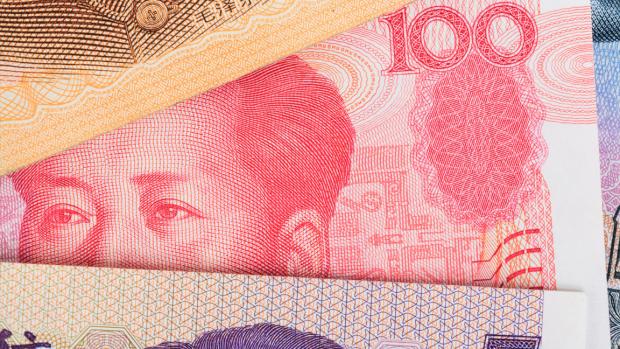On the Market: On China's Slowing Economy
Since 2009 China has had the second-largest gross domestic product (GDP) in the world. While some economists question the reliance on GDP numbers to measure the strength of a country’s economy, it is one of the best tools we have at the moment; it is a general calculation used to identify the health of a country’s economy the same way that measuring body mass index is used to identify obesity-related risks. In order for its economy to thrive, a country needs to offer products and services. The GDP is the total dollar value of those products and services. That value can be measured by accounting for every citizen’s income, or by adding everyone’s expenses, which is the more common approach.
Every year after 2009, China’s GDP has increased by around $1 trillion, usually a little more, and has come within $7 trillion of the United States’s GDP every year since 2013.
2015 has been a different story for China. Its economy grew by just 6.9 percent last quarter, the lowest growth since 2009.
That number may be misleading. Of China’s 31 provinces, 23 have reported growth higher than the 6.9 percent average, with two provinces, Chongqing and Guizhou, posting double digit percentage increases. The problem the country faces is that two of its largest economic hubs, Shanghai and Beijing, are reporting growth below the 6.9 percent overall growth. China’s President Xi Jinping said on Xinhua News that the country’s growth “should be no less than 6.5 percent in the next five years to realize the goal to double 2010 gross domestic product and per capita income by 2020.” Bloomberg reports that this will be the first time the country faces less than seven percent growth since the late 1970s.
This is not the first challenge China’s economy has faced in recent years but it may be the first time they failed to exercise alternative options in order to create growth. From 2011 to 2014 the government cut rates to help stimulate the market and the economy; during that time, they also lowered reserve requirements for their banks, which gave them more money to lend in an effort to increase spending. This time the problems may be more difficult to solve given China’s recent policy change from one child per family to two.
Because China has the second-largest and one of the fastest-growing economies in the world, many fear that China’s troubles will negatively impact the global market. Though only 13 percent of America’s GDP comes from foreign trade, around 40 percent of S&P 500 companies’ revenue comes from overseas.
Another concern: The US currently owes the Chinese government around $1.3 trillion. This is more money than the US owes any other individual nation, but is still far from the leading cause of our country’s $18 trillion debt. Though the US has a large debt, its projected GDP almost matches it by the dollar. According to Value Walk, which used a debt-to-GDP ratio, the US could pay off its national debt in just over a year if it applied its entire GDP. (According to Value Walk, 5-10 percent of a nation’s GDP is usually allocated to paying debt.) By comparison, Japan has a debt that accounts for 230 percent of its GDP. Our debt is high, but we can still manage it.
Many are wary of China’s financial slowdown, but at this point in time it appears there is no true panic. While the potential for global repercussions is real, CNN reports that, because the Chinese government owns most of the country’s banks, the country’s current economic struggles may have only a “limited spillover effect to other countries and investors.”
Any opinions are those of Goldfarb Financial and not necessarily those of RJFS or Raymond James. Expressions of opinion are as of this date and are subject to change without notice. Links are being provided for information purposes only. This information is not intended as a solicitation or an offer to buy or sell any security referred to herein. Raymond James is not affiliated with and does not endorse, authorize or sponsor any of the listed websites or their respective sponsors. Raymond James is not responsible for the content of any website or the collection or use of information regarding any website’s users and/or members. Raymond James is not affiliated with any of the people or organizations named in the above material. The S&P 500 is an unmanaged index of 500 widely held stocks that is generally considered representative of the U.S. stock market. Individuals cannot invest directly in any index. Past performance is not a guarantee of future results. The information has been obtained from sources considered to be reliable, but Raymond James does not guarantee that the foregoing material is accurate or complete.

